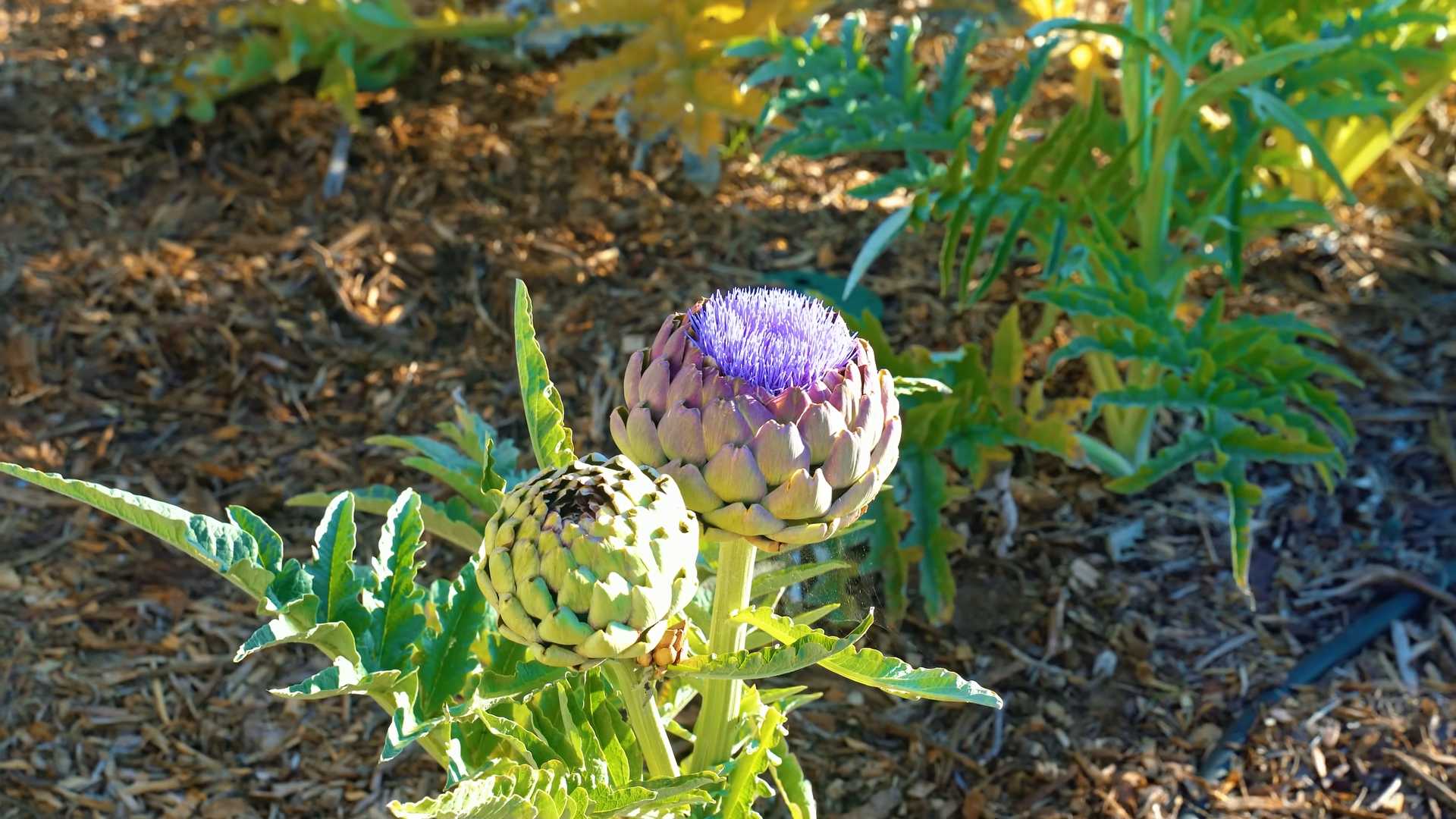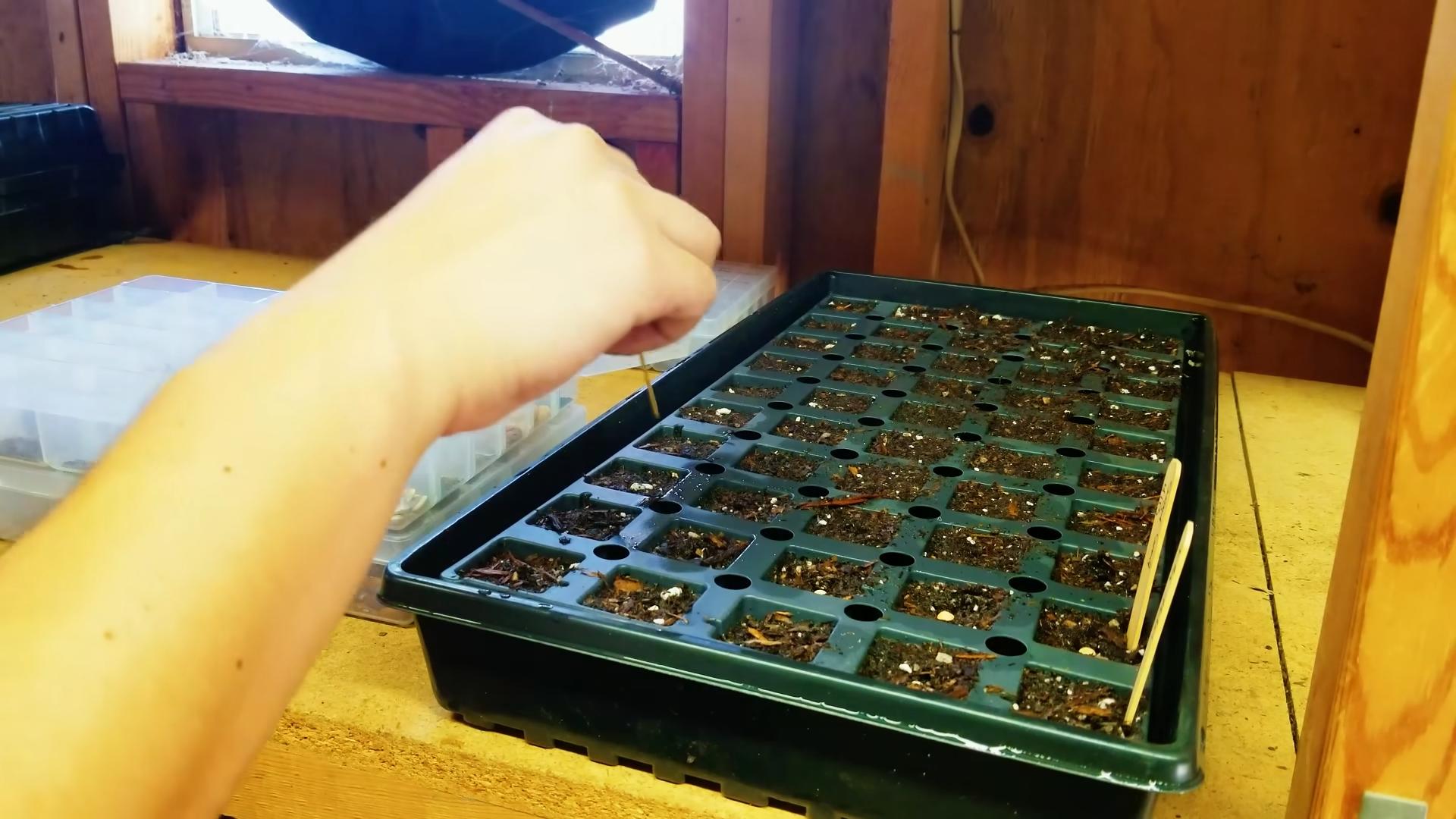Growing artichokes at home might seem like a challenge reserved for seasoned gardeners, but I’m here to tell you it’s totally achievable, even if you’re just starting out! Forget those expensive grocery store prices – imagine strolling into your own backyard and harvesting these delicious, architectural beauties.
Artichokes have a rich history, dating back to ancient Roman times where they were considered a delicacy. They’ve been cultivated and enjoyed for centuries, and now, you can bring that tradition to your own garden. But why bother with the effort, you ask? Well, beyond the sheer satisfaction of growing your own food, homegrown artichokes taste infinitely better than anything you’ll find in a store. They’re fresher, more flavorful, and you know exactly what went into growing them. Plus, they’re a stunning addition to any garden, adding a touch of Mediterranean charm.
This DIY guide is packed with easy-to-follow tricks and hacks that will demystify the process of growing artichokes at home. I’ll share my personal tips and tricks, from choosing the right variety to protecting your plants from pests. So, grab your gardening gloves, and let’s get started on this exciting journey to homegrown artichoke goodness!

Growing Artichokes: A Beginner’s Guide to Homegrown Goodness
Okay, so you want to grow artichokes? Awesome! Let me tell you, there’s nothing quite like harvesting your own spiky treasures. It might seem intimidating, but trust me, with a little patience and the right know-how, you can totally do this. I’m going to walk you through everything you need to know, from choosing the right variety to harvesting your delicious bounty.
Choosing Your Artichoke Variety
First things first, let’s talk artichoke varieties. Not all artichokes are created equal, and some are better suited for home gardens than others. Here are a few popular choices:
* Green Globe: This is probably the most common variety, and for good reason. It’s reliable, produces large, flavorful artichokes, and is relatively easy to grow. If you’re a beginner, I highly recommend starting with Green Globe.
* Violetta: If you’re looking for something a little different, Violetta artichokes are a beautiful purple variety. They’re slightly smaller than Green Globe, but they have a unique, slightly sweeter flavor.
* Imperial Star: This variety is known for its early maturity, which is great if you live in a cooler climate with a shorter growing season. It produces medium-sized artichokes with a tender heart.
* Big Heart: As the name suggests, this variety boasts a large, meaty heart. It’s a good choice if you’re primarily interested in the heart of the artichoke.
Consider your climate and personal preferences when choosing your variety. Green Globe is always a safe bet, but don’t be afraid to experiment!
Getting Started: Planting Your Artichokes
Artichokes can be grown from seed, but it’s generally easier and faster to start with transplants (small, established plants). Here’s how to get your artichokes in the ground:
1. Timing is Key: The best time to plant artichoke transplants is in the spring, after the last frost. In warmer climates, you can also plant them in the fall. Check your local frost dates to determine the best planting time for your area.
2. Choosing the Right Location: Artichokes need plenty of sunshine – at least 6-8 hours per day. They also need well-drained soil. Avoid planting them in areas where water tends to pool.
3. Preparing the Soil: Artichokes are heavy feeders, so it’s important to prepare the soil properly. Amend the soil with plenty of compost or well-rotted manure. This will provide the nutrients your artichokes need to thrive. I usually dig in a generous amount, about a bucketful per plant.
4. Digging the Holes: Dig holes that are slightly larger than the root ball of your transplants. Space the holes about 3-4 feet apart, as artichoke plants can get quite large.
5. Planting the Transplants: Gently remove the transplants from their containers and loosen the roots slightly. Place the transplants in the holes, making sure the top of the root ball is level with the surrounding soil.
6. Filling the Holes: Fill the holes with soil and gently firm the soil around the plants.
7. Watering Thoroughly: Water the transplants thoroughly after planting. This will help settle the soil and encourage root growth.
Caring for Your Artichokes: The Growing Season
Once your artichokes are planted, it’s important to provide them with the care they need to grow and produce those delicious buds.
1. Watering: Artichokes need consistent moisture, especially during hot, dry weather. Water deeply and regularly, but avoid overwatering, which can lead to root rot. I usually check the soil moisture by sticking my finger in the ground. If the top inch or two is dry, it’s time to water.
2. Fertilizing: As I mentioned earlier, artichokes are heavy feeders. Fertilize them regularly with a balanced fertilizer. I like to use a slow-release fertilizer in the spring and then supplement with liquid fertilizer every few weeks during the growing season.
3. Mulching: Mulching around your artichoke plants helps to retain moisture, suppress weeds, and regulate soil temperature. Use organic mulch, such as straw, wood chips, or shredded leaves.
4. Weeding: Keep the area around your artichoke plants free of weeds. Weeds compete with your artichokes for water and nutrients.
5. Pest and Disease Control: Artichokes can be susceptible to a few pests and diseases. Keep an eye out for aphids, snails, and slugs. You can control these pests with organic methods, such as hand-picking, insecticidal soap, or diatomaceous earth. Root rot can be a problem in poorly drained soil. Make sure your soil is well-drained and avoid overwatering.
6. Overwintering: In colder climates, artichokes need to be protected from frost. Cut back the foliage to about 6 inches and cover the plants with a thick layer of mulch, such as straw or leaves. You can also use a frost blanket to provide extra protection. In milder climates, you may not need to provide any winter protection.
Harvesting Your Artichokes: The Sweet Reward
Harvesting your artichokes is the most rewarding part of the process! Here’s how to know when your artichokes are ready to pick:
1. Timing is Everything: Artichokes are typically ready to harvest in the spring or early summer, depending on your climate and the variety you’re growing.
2. Look for Size and Tightness: The artichokes should be a good size, but the bracts (the leaves that make up the bud) should still be tightly closed. If the bracts are starting to open, the artichoke is past its prime and will be tough and bitter.
3. The Squeeze Test: Gently squeeze the artichoke. It should feel firm and heavy.
4. Cutting the Stem: Use a sharp knife to cut the artichoke stem about 2-3 inches below the base of the bud.
5. Enjoy Your Harvest: Artichokes are best eaten fresh. You can steam, boil, grill, or bake them. Don’t forget the delicious heart!
Propagating Artichokes: Expanding Your Patch
If you want to expand your artichoke patch, you can propagate them by division. Here’s how:
1. Timing: The best time to divide artichokes is in the spring, before they start actively growing.
2. Digging Up the Plant: Carefully dig up the entire artichoke plant.
3. Dividing the Roots: Use a sharp knife or spade to divide the plant into several smaller sections. Each section should have a healthy root system and at least one bud.
4. Replanting: Replant the divisions in prepared soil, spacing them about 3-4 feet apart.
5. Watering: Water the divisions thoroughly after planting.
Troubleshooting: Common Artichoke Problems
Even with the best care, you might encounter a few problems when growing artichokes. Here are some common issues and how to address them:
* Aphids: These tiny pests can suck the sap from artichoke leaves, causing them to become distorted and yellow. Control aphids with insecticidal soap or by introducing beneficial insects, such as ladybugs.
* Snails and Slugs: These slimy pests can munch on artichoke leaves and buds. Control snails and slugs by hand-picking them, using beer traps, or applying diatomaceous earth.
* Root Rot: This fungal disease can cause the roots of artichoke plants to rot. Prevent root rot by planting artichokes in well-drained soil and avoiding overwatering.
* Lack of Buds: If your artichoke plants aren’t producing buds, it could be due to a lack of sunlight, nutrients, or water. Make sure your plants are getting enough of all three.
Extra Tips for Artichoke Success
Here are a few extra tips to help you grow the best artichokes possible:
* Choose the right variety for your climate.
* Prepare the soil properly with plenty of compost or manure.
* Water deeply and regularly, especially during hot, dry weather.
* Fertilize regularly with a balanced fertilizer.
* Mulch around your plants to retain moisture and suppress weeds.
* Protect your plants from frost in colder climates.
* Harvest your artichokes when they are firm and the bracts are tightly closed.
Growing artichokes at home can be a rewarding experience. With a little patience and effort, you can enjoy fresh, delicious artichokes straight from your garden. Happy gardening!

Conclusion
So, there you have it! Growing artichokes at home, while it might seem daunting at first, is a deeply rewarding experience that brings the taste of the Mediterranean right to your backyard. We’ve walked you through the essential steps, from selecting the right variety and preparing your soil to nurturing your plants and harvesting those delectable buds. But why should you embark on this journey?
Firstly, the flavor of homegrown artichokes is simply unparalleled. Forget the bland, sometimes bitter artichokes you find in the grocery store. When you harvest your own at peak ripeness, you’re rewarded with a tender, sweet, and nutty flavor that’s truly exceptional. Imagine steaming them fresh from the garden, dipping the leaves in garlic aioli, and savoring the taste of your own hard work. It’s an experience that elevates the simple act of eating into something truly special.
Secondly, growing artichokes is a sustainable and eco-friendly choice. You’re reducing your reliance on commercially grown produce, which often travels long distances and contributes to carbon emissions. Plus, you have complete control over the growing process, ensuring that your artichokes are free from harmful pesticides and herbicides. You can even use organic gardening practices to further minimize your environmental impact.
Thirdly, artichoke plants are beautiful and add a touch of elegance to any garden. Their silvery-green foliage and architectural form make them a stunning focal point, and their large, thistle-like flowers attract beneficial pollinators like bees and butterflies. They’re not just a source of food; they’re a source of beauty and biodiversity.
But the benefits don’t stop there. Growing artichokes can also be a fun and educational activity for the whole family. It’s a great way to teach children about where their food comes from and to instill a love of gardening. And let’s not forget the satisfaction of harvesting your own food and sharing it with friends and family.
Now, let’s talk about variations. While we’ve focused on the traditional method of growing artichokes from starts, you can also try growing them from seed, although this requires more patience and effort. Experiment with different varieties to find the ones that thrive best in your climate and soil conditions. Consider companion planting to deter pests and attract beneficial insects. And don’t be afraid to get creative with your artichoke recipes. From grilled artichokes to artichoke heart pizza, the possibilities are endless.
Growing artichokes at home is more than just a gardening project; it’s an investment in your health, your environment, and your culinary enjoyment. It’s a chance to connect with nature, to learn new skills, and to savor the fruits (or rather, the buds) of your labor.
So, what are you waiting for? Grab your gardening gloves, prepare your soil, and get ready to embark on your own artichoke-growing adventure. We’re confident that you’ll be amazed by the results.
And once you’ve harvested your first crop, we want to hear all about it! Share your experiences, your tips, and your favorite artichoke recipes in the comments below. Let’s create a community of artichoke enthusiasts and inspire others to discover the joys of growing their own food. Happy gardening!
Frequently Asked Questions (FAQ)
What is the best time of year to plant artichokes?
The ideal time to plant artichokes depends on your climate. In regions with mild winters (zones 7-10), you can plant artichokes in the fall or early winter. This allows them to establish themselves before the heat of summer. In colder climates (zones 6 and below), it’s best to plant artichokes in the spring after the last frost. This gives them a full growing season to mature before winter arrives. If you live in a very cold climate, you might consider growing artichokes as an annual, starting them indoors in late winter and transplanting them outdoors in the spring.
How much space do artichoke plants need?
Artichoke plants are large and require plenty of space to grow. Each plant needs at least 3 to 4 feet of space in all directions. This allows them to spread out and develop their full potential. If you’re planting multiple artichoke plants, space them 4 to 6 feet apart in rows that are 6 to 8 feet apart. This will ensure that they have enough room to grow without crowding each other.
What kind of soil do artichokes prefer?
Artichokes thrive in well-drained, fertile soil that is rich in organic matter. They prefer a slightly acidic to neutral soil pH of 6.0 to 7.0. Before planting, amend your soil with compost, aged manure, or other organic materials to improve its drainage and fertility. If your soil is heavy clay, consider adding sand or perlite to improve its drainage. Artichokes also benefit from regular fertilization throughout the growing season. Use a balanced fertilizer or a fertilizer specifically formulated for vegetables.
How often should I water artichoke plants?
Artichokes need consistent moisture, especially during hot, dry weather. Water them deeply and regularly, aiming to keep the soil consistently moist but not waterlogged. Avoid overhead watering, as this can lead to fungal diseases. Instead, water at the base of the plants, using a soaker hose or drip irrigation system. Mulching around the plants can also help to retain moisture and suppress weeds. During the winter months, reduce watering frequency, but don’t let the soil dry out completely.
How do I know when artichokes are ready to harvest?
Artichokes are ready to harvest when the buds are plump and firm, and the bracts (the outer leaves) are still tightly closed. The size of the artichoke will vary depending on the variety, but generally, you should harvest them when they are about 3 to 4 inches in diameter. To harvest, use a sharp knife to cut the stem about 2 to 3 inches below the base of the bud. Wear gloves when harvesting, as the bracts can be prickly.
What are some common pests and diseases that affect artichokes?
Artichokes can be susceptible to a variety of pests and diseases, including aphids, snails, slugs, artichoke plume moth, and powdery mildew. To prevent pest and disease problems, choose disease-resistant varieties, practice good sanitation, and monitor your plants regularly. If you notice any signs of pests or diseases, take action promptly. You can use organic pest control methods, such as insecticidal soap or neem oil, to control aphids and other pests. For fungal diseases, improve air circulation and avoid overhead watering.
Can I grow artichokes in containers?
So, there you have it! Growing artichokes at home, while it might seem daunting at first, is a deeply rewarding experience that brings the taste of the Mediterranean right to your backyard. We’ve walked you through the essential steps, from selecting the right variety and preparing your soil to nurturing your plants and harvesting those delectable buds. But why should you embark on this journey?
Firstly, the flavor of homegrown artichokes is simply unparalleled. Forget the bland, sometimes bitter artichokes you find in the grocery store. When you harvest your own at peak ripeness, you’re rewarded with a tender, sweet, and nutty flavor that’s truly exceptional. Imagine steaming them fresh from the garden, dipping the leaves in garlic aioli, and savoring the taste of your own hard work. It’s an experience that elevates the simple act of eating into something truly special.
Secondly, growing artichokes is a sustainable and eco-friendly choice. You’re reducing your reliance on commercially grown produce, which often travels long distances and contributes to carbon emissions. Plus, you have complete control over the growing process, ensuring that your artichokes are free from harmful pesticides and herbicides. You can even use organic gardening practices to further minimize your environmental impact.
Thirdly, artichoke plants are beautiful and add a touch of elegance to any garden. Their silvery-green foliage and architectural form make them a stunning focal point, and their large, thistle-like flowers attract beneficial pollinators like bees and butterflies. They’re not just a source of food; they’re a source of beauty and biodiversity.
But the benefits don’t stop there. Growing artichokes can also be a fun and educational activity for the whole family. It’s a great way to teach children about where their food comes from and to instill a love of gardening. And let’s not forget the satisfaction of harvesting your own food and sharing it with friends and family.
Now, let’s talk about variations. While we’ve focused on the traditional method of growing artichokes from starts, you can also try growing them from seed, although this requires more patience and effort. Experiment with different varieties to find the ones that thrive best in your climate and soil conditions. Consider companion planting to deter pests and attract beneficial insects. And don’t be afraid to get creative with your artichoke recipes. From grilled artichokes to artichoke heart pizza, the possibilities are endless.
Growing artichokes at home is more than just a gardening project; it’s an investment in your health, your environment, and your culinary enjoyment. It’s a chance to connect with nature, to learn new skills, and to savor the fruits (or rather, the buds) of your labor.
So, what are you waiting for? Grab your gardening gloves, prepare your soil, and get ready to embark on your own artichoke-growing adventure. We’re confident that you’ll be amazed by the results.
And once you’ve harvested your first crop, we want to hear all about it! Share your experiences, your tips, and your favorite artichoke recipes in the comments below. Let’s create a community of artichoke enthusiasts and inspire others to discover the joys of growing their own food. Happy gardening!
Frequently Asked Questions (FAQ)
What is the best time of year to plant artichokes?
The ideal time to plant artichokes depends on your climate. In regions with mild winters (zones 7-10), you can plant artichokes in the fall or early winter. This allows them to establish themselves before the heat of summer. In colder climates (zones 6 and below), it’s best to plant artichokes in the spring after the last frost. This gives them a full growing season to mature before winter arrives. If you live in a very cold climate, you might consider growing artichokes as an annual, starting them indoors in late winter and transplanting them outdoors in the spring.
How much space do artichoke plants need?
Artichoke plants are large and require plenty of space to grow. Each plant needs at least 3 to 4 feet of space in all directions. This allows them to spread out and develop their full potential. If you’re planting multiple artichoke plants, space them 4 to 6 feet apart in rows that are 6 to 8 feet apart. This will ensure that they have enough room to grow without crowding each other.
What kind of soil do artichokes prefer?
Artichokes thrive in well-drained, fertile soil that is rich in organic matter. They prefer a slightly acidic to neutral soil pH of 6.0 to 7.0. Before planting, amend your soil with compost, aged manure, or other organic materials to improve its drainage and fertility. If your soil is heavy clay, consider adding sand or perlite to improve its drainage. Artichokes also benefit from regular fertilization throughout the growing season. Use a balanced fertilizer or a fertilizer specifically formulated for vegetables.
How often should I water artichoke plants?
Artichokes need consistent moisture, especially during hot, dry weather. Water them deeply and regularly, aiming to keep the soil consistently moist but not waterlogged. Avoid overhead watering, as this can lead to fungal diseases. Instead, water at the base of the plants, using a soaker hose or drip irrigation system. Mulching around the plants can also help to retain moisture and suppress weeds. During the winter months, reduce watering frequency, but don’t let the soil dry out completely.
How do I know when artichokes are ready to harvest?
Artichokes are ready to harvest when the buds are plump and firm, and the bracts (the outer leaves) are still tightly closed. The size of the artichoke will vary depending on the variety, but generally, you should harvest them when they are about 3 to 4 inches in diameter. To harvest, use a sharp knife to cut the stem about 2 to 3 inches below the base of the bud. Wear gloves when harvesting, as the bracts can be prickly.
What are some common pests and diseases that affect artichokes?
Artichokes can be susceptible to a variety of pests and diseases, including aphids, snails, slugs, artichoke plume moth, and powdery mildew. To prevent pest and disease problems, choose disease-resistant varieties, practice good sanitation, and monitor your plants regularly. If you notice any signs of pests or diseases, take action promptly. You can use organic pest control methods, such as insecticidal soap or neem oil, to control aphids and other pests. For fungal diseases, improve air circulation and avoid overhead watering.
Can I grow artichokes in containers?
Yes, you can grow artichokes in containers, but you’ll need to choose a large container that is at least 24 inches in diameter and 24 inches deep. Use a high-quality potting mix that is well-draining and rich in organic matter. Container-grown artichokes will need more frequent watering and fertilization than those grown in the ground. Place the container in a sunny location that receives at least 6 hours of sunlight per day.
How do I overwinter artichoke plants in cold climates?
In cold climates, artichokes need protection from freezing temperatures. After the first frost, cut back the foliage to about 6 inches above the ground. Mulch heavily around the base of the plants with straw, leaves, or other organic materials. You can also cover the plants with a burlap sack or a cold frame for added protection. In very cold climates, you may need to dig up the plants and store them in a cool, dark place over the winter. Replant them in the spring after the last frost.
Are artichokes perennials?
In mild climates (zones 7-10), artichokes are perennials, meaning they will live for several years. In colder climates (zones 6 and below), they are often grown as annuals, as they may not survive the winter. However, with proper protection, you can overwinter artichoke plants in colder climates and enjoy them for several years.
What are some good companion plants for artichokes?
Good companion plants for artichokes include legumes (such as beans and peas), which fix nitrogen in the soil, and aromatic herbs (such as rosemary, thyme, and sage), which deter pests. Avoid planting artichokes near fennel, as it can inhibit their growth.




Leave a Comment